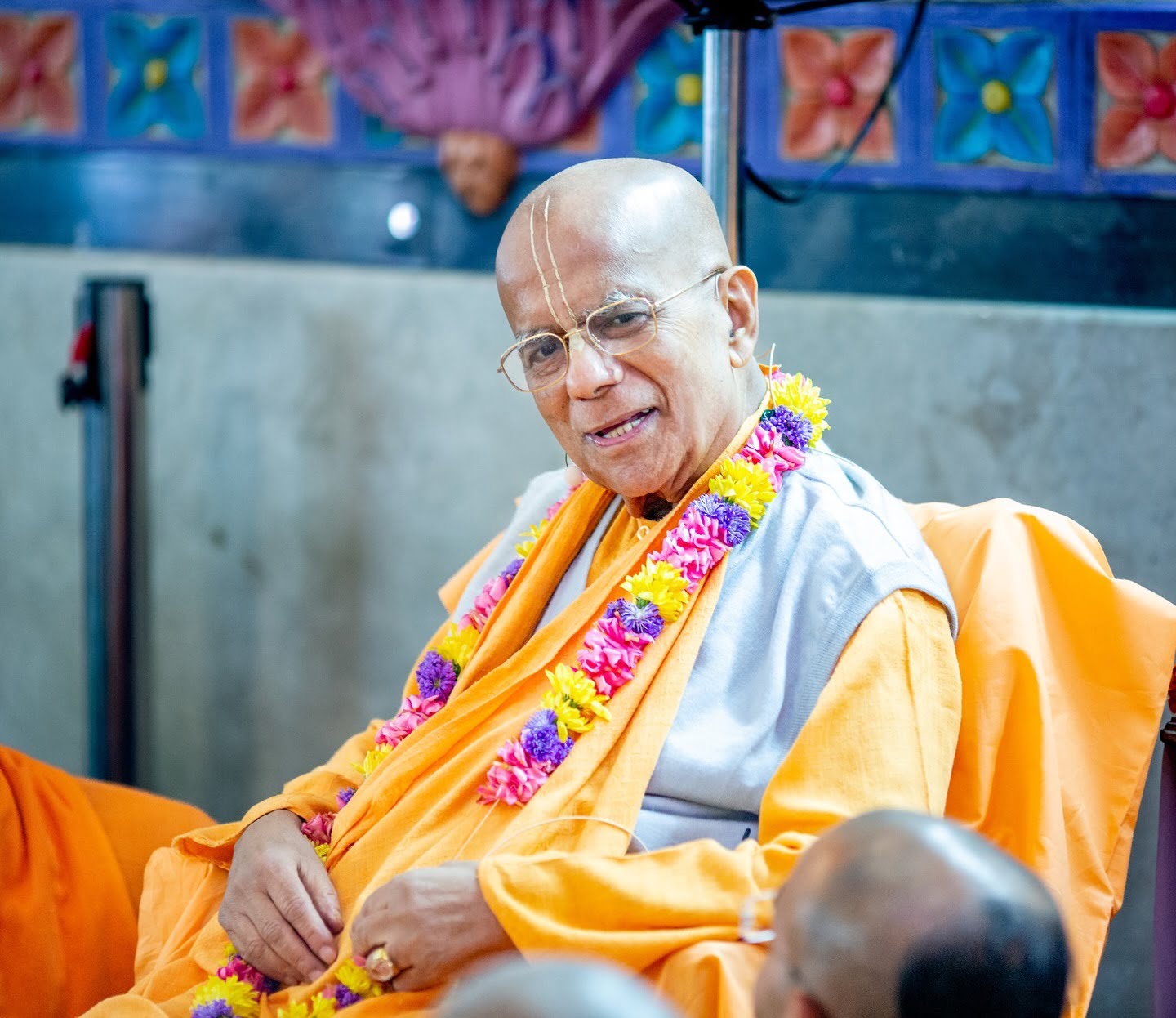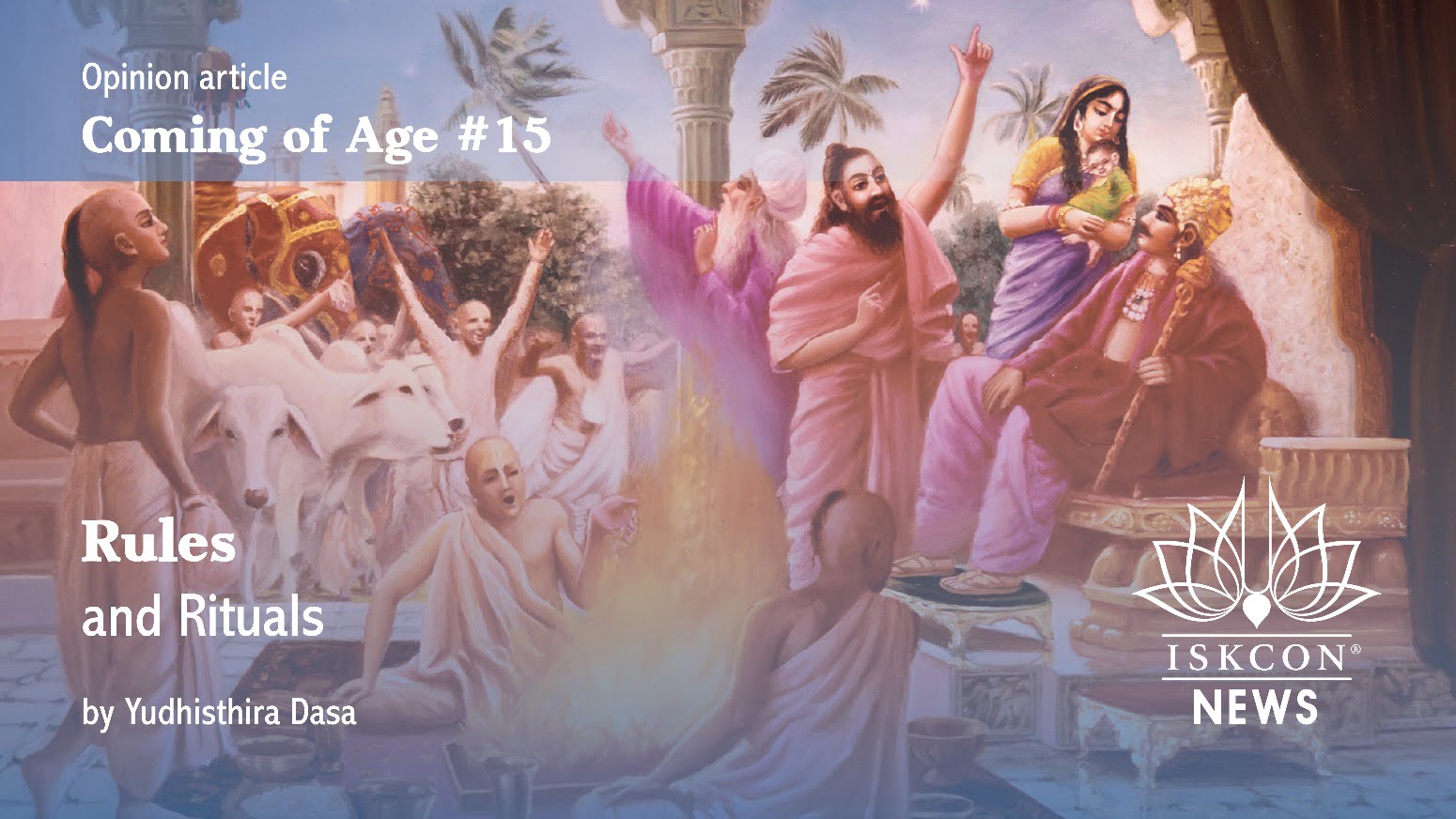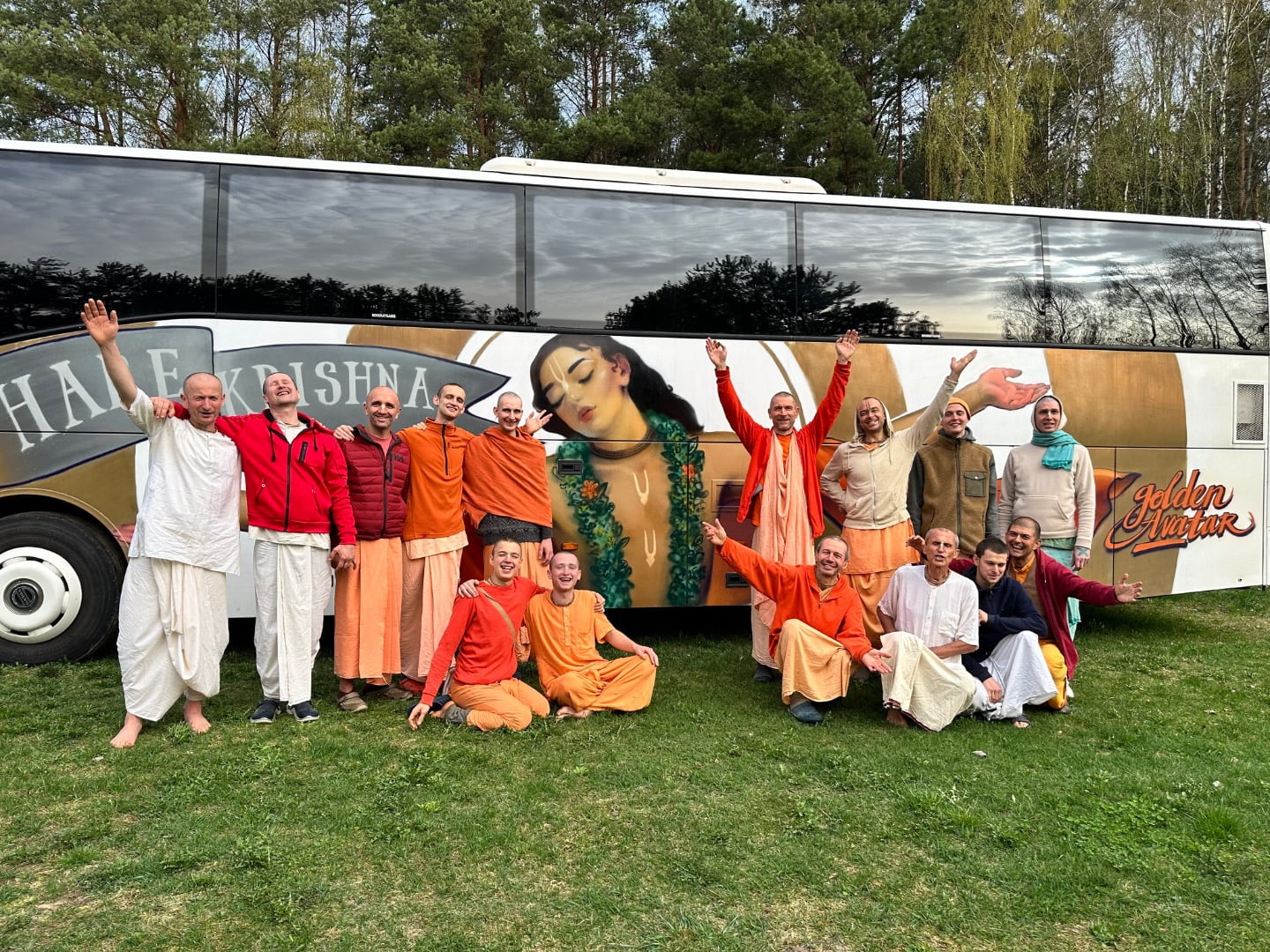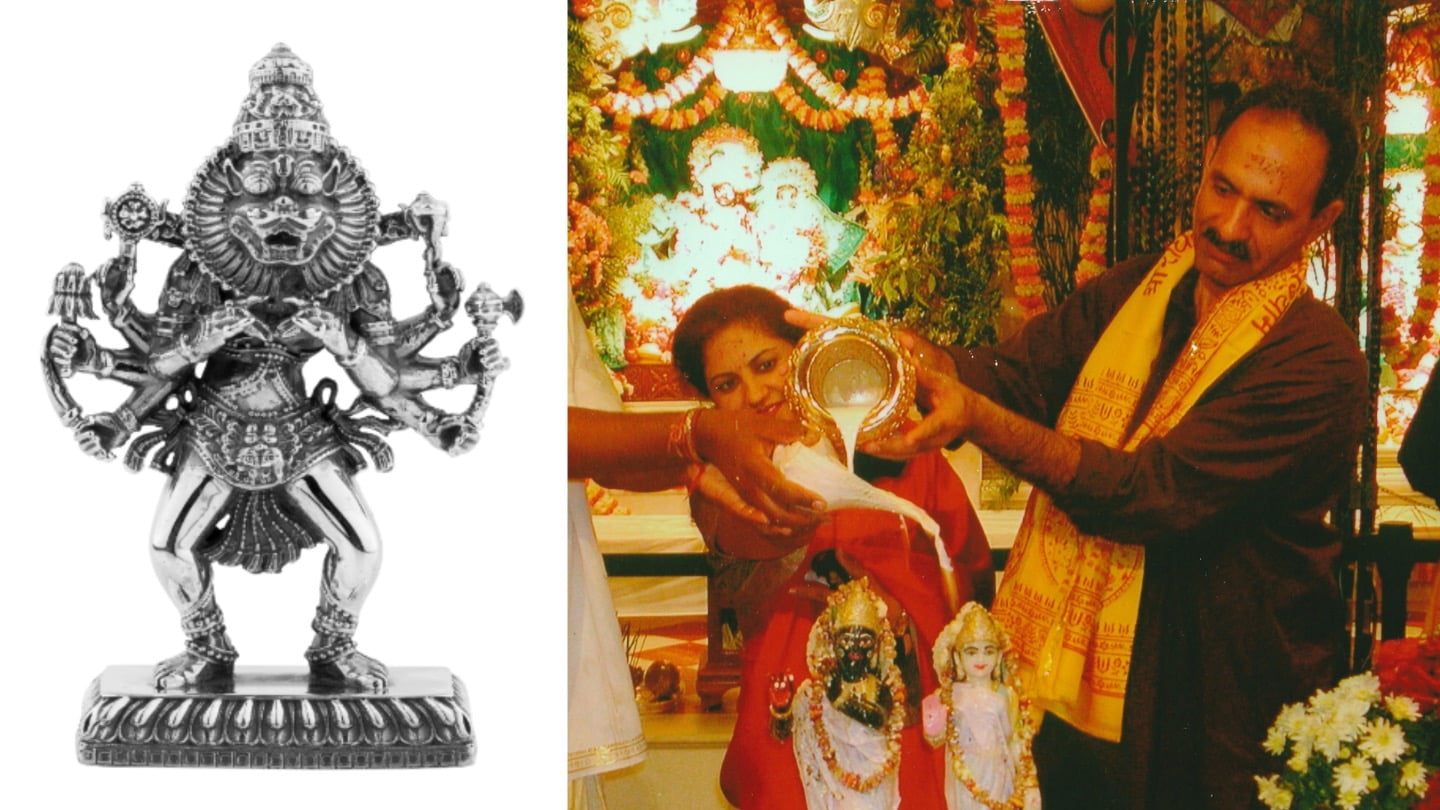What Is ISKCON? Who Is a Member of ISKCON?
By Urmila Dasi | Jan 26, 2012
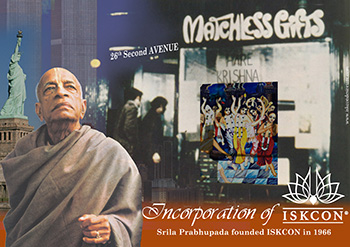
By Urmila Dasi (Dr. Edith Best, Professor of ISKCON History and The Sociology of ISKCON at Bhaktivedanta College, Durbuy, Belgium; Associate Editor of Back to Godhead magazine; member of the Sastric Advisory Council to the GBC)
Understanding ISKCON through the lens of social development and history
A.C. Bhaktivedanta Swami Prabhupada established ISCKON when it consisted of one rented storefront in New York City. He wrote purposes for his new society—to teach spiritual knowledge, consciousness of our existence as a soul part of the Supreme Godhead Krishna, and a simpler natural way of life. To accomplish these ends, Prabhupada wanted to bring the members closer together, create holy places, engage in sankirtana (in the method and mood of Sri Caitanya Mahaprabhu), and distribute publications. During the eleven years between the time that Prabhupada established ISKCON and he passed from this world, ISKCON was fairly easy to define. It consisted of temples or centers which at the end numbered 108. Local ISKCON legal entities owned or rented these properties. An international board, called the Governing Body Commission, or GBC, had oversight over the centers, each of which also had local leaders. The vast majority of members lived on the temple property and were all expected to follow the strict rules of a disciple. Such rules include waking up before sunrise for hours of mantra meditation, group chanting, and scripture study. The balance of the day was to be spent promoting the work of ISKCON. Members’ lives had to be free of all illicit sex, intoxication, gambling, and the eating of meat, fish, or eggs. Early in ISKCON’s history, there were also “life members” who donated to ISKCON in exchange for books and guest privileges, and there were people who regularly assisted ISKCON without following all the lifestyle or living physically under GBC authority. However, those who lived in temples considered those two groups more like supporters or sympathizers than fellow members.
ISKCON membership grew rapidly in the mid-late 70’s and early 80’s. More and more members married and had families which made living a tightly supervised communal life awkward and strained for many of them. Additionally, some prominent ISKCON leaders proved themselves unable to walk in the footsteps of the founder and struggled with keeping the vows of discipleship. By the late 80’s and certainly into the 90’s, most official ISKCON centers had a small fraction of their former residents, while members increasingly lived and worked independently of GBC and local ISKCON property and, therefore, authority. Several interesting developments affected ISKCON’s changing identity during this period. One was that many members who lived independently continued to follow the vows of discipleship and to advance the mission of Srila Prabhupada, in some cases with more vigor or success than the local center. Another was that the role of the supporters and sympathizers became important, and in some places, essential, for the success of ISKCON’s mission and even for the physical maintenance of local centers. Such persons were, like fully devoted members, generally living apart from ISKCON owned property with lives ungoverned by GBC rulings, which controlled only official centers. Supporters and sympathizers became a major source of both financial support and voluntary labor, both of which had formerly come from resident members. This role blurred the line between members, supporters, and sympathizers such that in many places all of them became “members”.
Gradually the numbers of ISKCON members of all categories living outside of GBC controlled property made up 96% of those self-identifying as “ISKCON members.” If ISKCON were still to be defined as those living on ISKCON property under GBC authority, ISKCON would have become a very small organization indeed, and barely able to accomplish any of the founder’s mission. However, ISKCON’s mission is increasingly being realized and self-identifying membership is growing. Many self-identified members have started affiliated organizations that work more or less in cooperation with the leaders of local ISKCON centers and the GBC. In such an environment, the boundaries and identity of ISKCON, and the definition of a member of ISKCON, have become increasingly harder to articulate.
This growing difficulty with determining where ISKCON and ISKCON membership begins and ends is common to all the major religious systems and organizations of the world. Naturally this situation poses challenges for the GBC and local leadership who are charged with maintaining Prabhupada’s standards of practice and philosophy.
Understanding ISKCON in the Movement of Mahaprabhu
Krsnadasa Kaviraja in his biography of Sri Caitanya Mahaprabhu, Caitanya Caritamrita, writes of the followers of Mahaprabhu as branches of His divine tree. Prabhupada writes in his commentary to Adi 12.73 that the ISKCON branch is “being directly watered by Sri Caitanya Mahaprabhu.” Prabhupada writes (purport SB 8.5.23) that Mahaprabhu’s sankirtana movement will continue for 10,000 years after Mahaprabhu’s appearance. Although sometimes Prabhupada equated the legal entity of ISKCON with Krsna consciousness and with Mahaprabhu’s movement, he also cautioned many times that there were many ways in which ISKCON could be spoiled and become useless. (1) The point here is that, as Mahaprabhu’s movement expands, ISKCON’s role in that movement is fluid and subject to several factors, primary of which is ISKCON’s purity.
If we assume that ISKCON will continue to have a role in Mahaprabhu’s movement, what form would ISKCON have in a golden age? Considering one possible future when the entire world were in Mahaprabhu’s movement, would all people then be members of ISKCON and the GBC chair be the world emperor? In such a scenario, ISKCON, under the administration of the GBC, would be managing all the world’s affairs along with social welfare work and military enterprises. In another possible future, we can envision ISKCON as the official world church providing centers of worship and education, training those who lead the world in crafts, business, agriculture, politics, medicine, science, social welfare, and so forth. In either of those possibilities, citizenship in the world government would be equal to membership in ISKCON. Yet another scenario would be that ISKCON is one of a number of spiritual societies which manages places of worship and education and perhaps some villages also, training persons according to their natures to live as Krsna conscious persons. In the second and third scenario, ISKCON membership would be a term used only for those who serve full-time in the places of worship and education or in ISKCON-managed villages. It should be obvious that a vision of ISKCON’s ultimate role has a direct impact on how we chose to limit or expand our idea of what ISKCON is at present and what constitutes a member. The vision directs, for example, whether ISKCON leadership should encourage affiliate organizations to have independent and cooperative relationships with directly GBC managed projects, or to relinquish their quasi-independent status and come firmly under GBC authority. The vision directs to what extent we feel it desirable for all self-identified ISKCON members to subject their lives to the authority of local ISKCON leaders and the GBC, as well.
Understanding ISKCON According to Our Level of Consciousness
Some persons will define ISKCON as part of the transcendental pastimes of the Supreme Lord. (2) There will be those who experience ISKCON as a way of organizing a preaching mission. (3) Others may characterize ISKCON as an institution that aids in personal purification and liberation from material consciousness. (4) Others may understand ISKCON as promoting pious culture and dharma. (5) And others, despite warnings to the contrary, will experience ISKCON as a spiritually oriented organization where one can live a comfortable life, and acquire money, followers, status, position and power. (6)
————–
1. Some examples: in my absence you may neglect Deity worship. Then the whole thing will be spoiled. Morning Walk — July 25, 1975, Los Angeles; I am fearful that if we expand too much in this way that we shall become weakened and gradually the whole thing will become lost. Letter to: Hamsaduta — Los Angeles 22 June, 1972; Krishna Consciousness Movement is for training men to be independently thoughtful and competent in all types of departments of knowledge and action, not for making bureaucracy. Once there is bureaucracy the whole thing will be spoiled. Letter to: Karandhara — Bombay 22 December, 1972)
2. “The present Krsna consciousness movement is nondifferent from the pastimes performed by Sri Caitanya Mahaprabhu when He was personally present, for the same principles are being followed and the same actions performed without fail.” (purport CC Antya 5.88)
3. “The Krsna consciousness movement means we are preaching the teachings of Krsna.” (lecture Bhagavad-gita 13.3 — Bombay, September 26, 1973)
4. “Purification of consciousness is the purpose of this Krsna consciousness movement.” (PoP 8: Failure and Success in Yoga) “This Krsna consciousness movement is the greatest gift for persons who are actually desiring liberation.” (purport SB 4.22.35)
5. “This Krsna consciousness movement is giving everyone a chance to become pious.” (TLK Vs 16) “The Krsna consciousness movement is being propagated all over the world to reestablish the varnasrama-dharma system and thus save human society from gliding down to hellish life.” (purport SB 5.19.19)
6. “We have actually seen that one of the disciples of Bhaktisiddhanta Sarasvati Thakura wanted to enjoy the property of his spiritual master, and the spiritual master, being merciful toward him, gave him the temporary property, but not the power to preach.” (purport SB 5.18.22) “Do not think in this way of big corporation, big credits, centralization — these are all nonsense proposals.” (letter to Karandhara, 22nd December, 1972)








